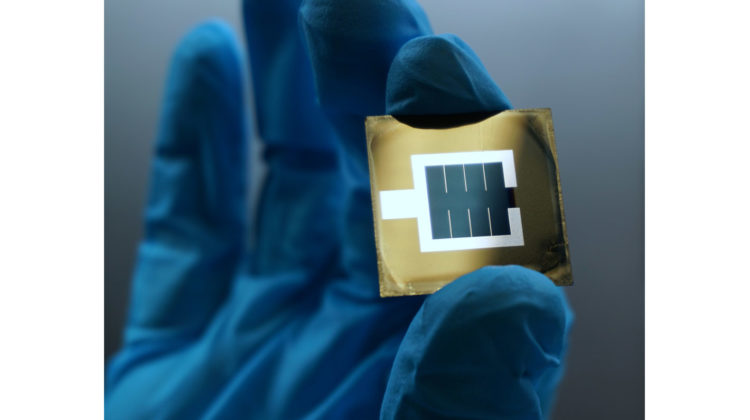
Scientists at the Helmholtz-Zentrum Berlin für Materialien und Energie in Berlin (HZB) have retaken the world record for solar energy conversion by A tandem solar cell consisting of a silicon bottom cell and a perovskite top cell. The new tandem solar cell converts 32.5 per cent of the incident solar radiation into electrical energy, a result certified by theEuropean Solar Test Installation in Italy.
‘This is a really big leap forward that we didn’t foresee a few months ago,’ said Professor Steve Albrecht. ‘All the teams involved at HZB, especially the PV Competence Center (PVComB) and the HySPRINT Innovation lab teams, have worked together successfully and with passion.
Albrecht’s team used an advanced perovskite composition with a smart interface modification developed to reduce charge carrier recombination losses and then carried out a detailed analysis to understand the specific properties of the modification. These developments were then successfully implemented in tandem solar cells and combined with further optical improvements.
The past few years have seen ongoing solar cell efficiency developments at a number of research institutes and companies. In late 2021, teams from HZB achieved a record efficiency of 29.8 per cent using periodic nanotextures. Then, in summer 2022, the Ecole Polytechnique Fédérale de Lausanne in Switzerland reported a certified tandem cell conversion of 31.3 per cent.
With the new certified value of 32.5 per cent, the record is again back at HZB. ‘We are very excited about the new value as it shows that the perovskite/silicon tandem technology is highly promising for contributing to a sustainable energy supply,’ said Albrecht.
‘At 32.5 per cent, the solar cell efficiency of the HZB tandems is now in ranges previously only achieved by expensive III/V semiconductors,’ said HZB’s scientific director, Professor Bernd Rech.


